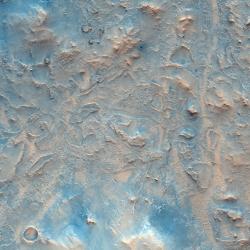The main gases in the troposphere
As is also the case higher up in the layers of the atmosphere, the gases that play an important role on the chemical composition or the climat of the troposphere are present in very small amounts. This is why they are called "trace gases".
Typical concentrations of these gases near the surface of the Earth
| H2O | water vapour | 0.0001 - 0.01 |
| CO2 | carbon dioxide | 360 ppm |
| CH4 | methane | 1.7 ppm |
| N2O | dinitrogenoxide | 310ppb |
| CO | carbon monoxide | 50-500 ppb |
| O3 | ozone | 10-80 ppb |
| SO4 | sulphate | 20 ppt - 2 ppb |
| NO2 | nitrogen dioxide | 1 ppt- 10 ppb |
| OH | hydroxyl radical | 0.01-0.1 ppt |
Expressed as volume mixing ratios, i.e. as the fractions of the air volume occupied by the gas:
- 1 ppm= 1 particle per million = 10-6
- 1 ppb = one particle per billion = 10-9
- 1 ppt= one particle per 1000 billion = 10-12
Water vapour and carbon dioxide, the most important gases in Earth's troposphere
The basic principles of the water (H2O) cycle are well known:
- evaporation of liquid water at the surface
- condensation
- cloud formation
- rainfall
The average residence time of water vapour in the atmosphere is of the order of ten days, which is very short. This explains the large differences in the amounts of water vapour (and so rainfall) occurring between different places on Earth. Although water is little or not influenced by chemistry in the atmosphere, it plays a large role in the oxidation of several atmospheric compounds.
Carbon dioxide (CO2) has a very long life span in the atmosphere (several centuries). Its mixing ratio is almost homogeneous in the troposphere and the stratosphere.
The presence of carbon dioxide is strongly linked to life on Earth. CO2 is actually necessary for plant growth, since the carbon in plants and animals originates exclusively from atmospheric CO2. And the main source of atmospheric CO2 is the microbial degradation of organic material. However, human activities also influence the concentration of carbon dioxide.
Like water vapour, CO2 is not chemically active.
Relatively abundant tropospheric gases
Nitrous oxide (N2O) and chlorofluorocarbons (CFC's) are other examples of relatively abundant gases. They are not chemically active in the troposphere, but they do play an important role in stratospheric chemistry.
Knowing the global budget of less abundant, but more reactive gases, and understanding the behaviour and distribution of these gases is important but difficult, because of the numerous and complex chemical and physical processes involved.
The driving forces behind this chemistry is solar radiation, in particular in the near ultra-violet (UV-A and UV-B) and to a lower extent also in the visible range. Solar radiation can indeed "break up" (dissociate) chemical molecules. The troposphere is protected from the hardest ultraviolet radiation by the stratospheric ozone layer.
In spite of this efficient filtering of harmful UV radiation, solar radiation still can break up, for example, ozone and nitrogen dioxide molecules in the troposphere. These dissociation processes initiate a complex series of chemical reactions, leading for example to the production of radicals like the hydroxyl radical (OH). This radical plays a determining role, since it is responsible for the oxidation of many gases emitted at the Earth's surface that would otherwise accumulate in the troposphere.
One says that the hydroxyl radical is the "cleansing agent" of the atmosphere.


